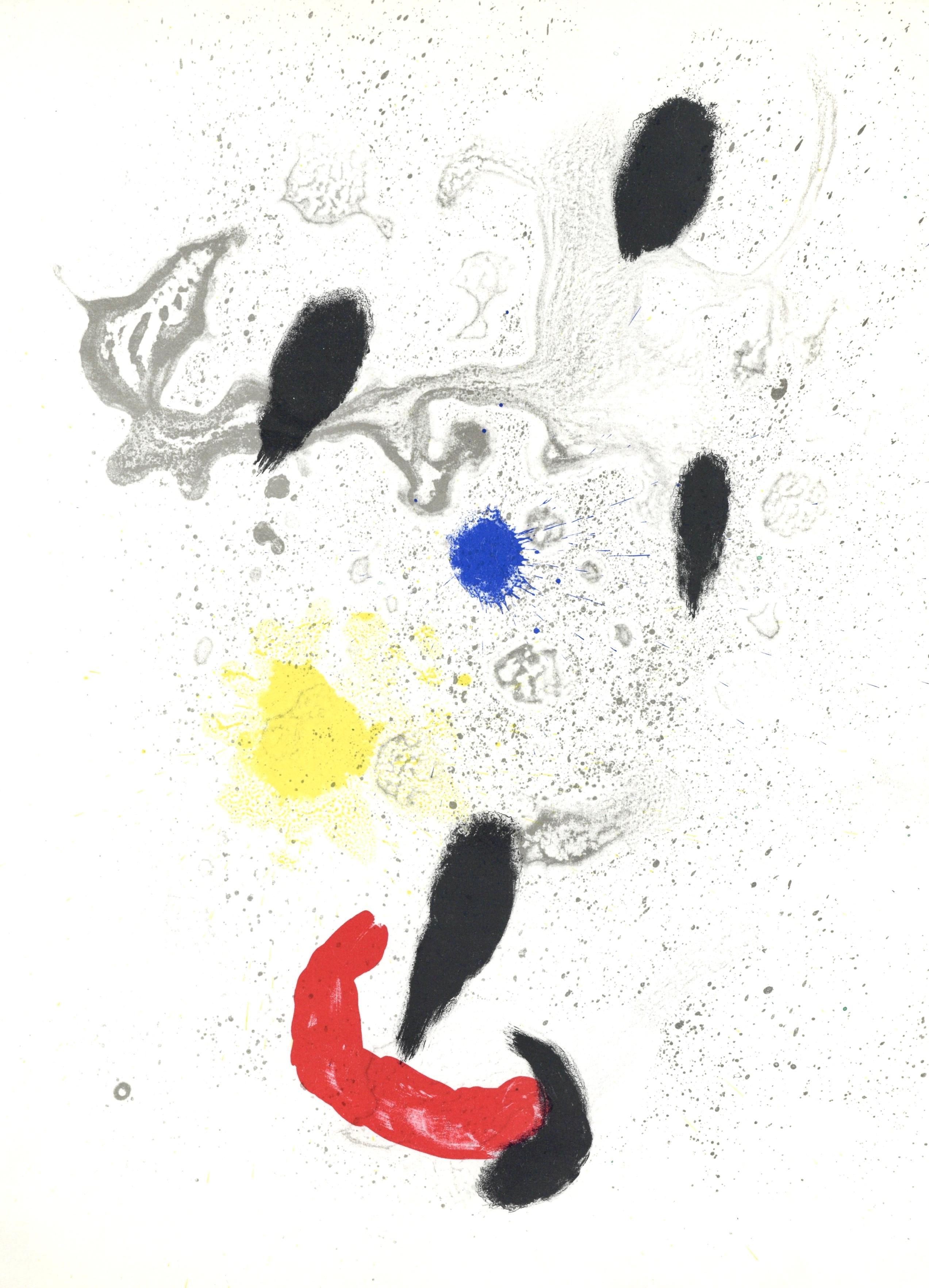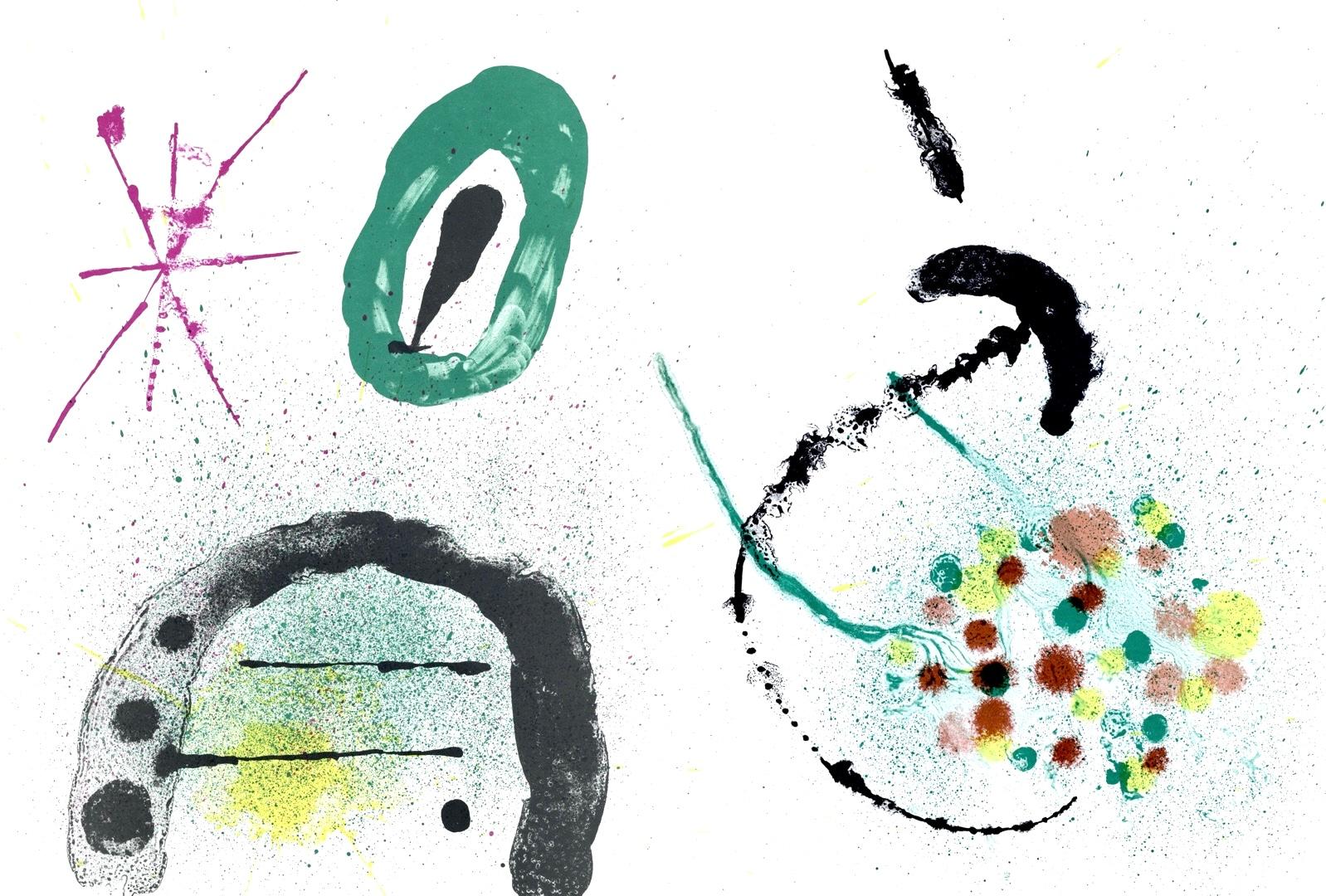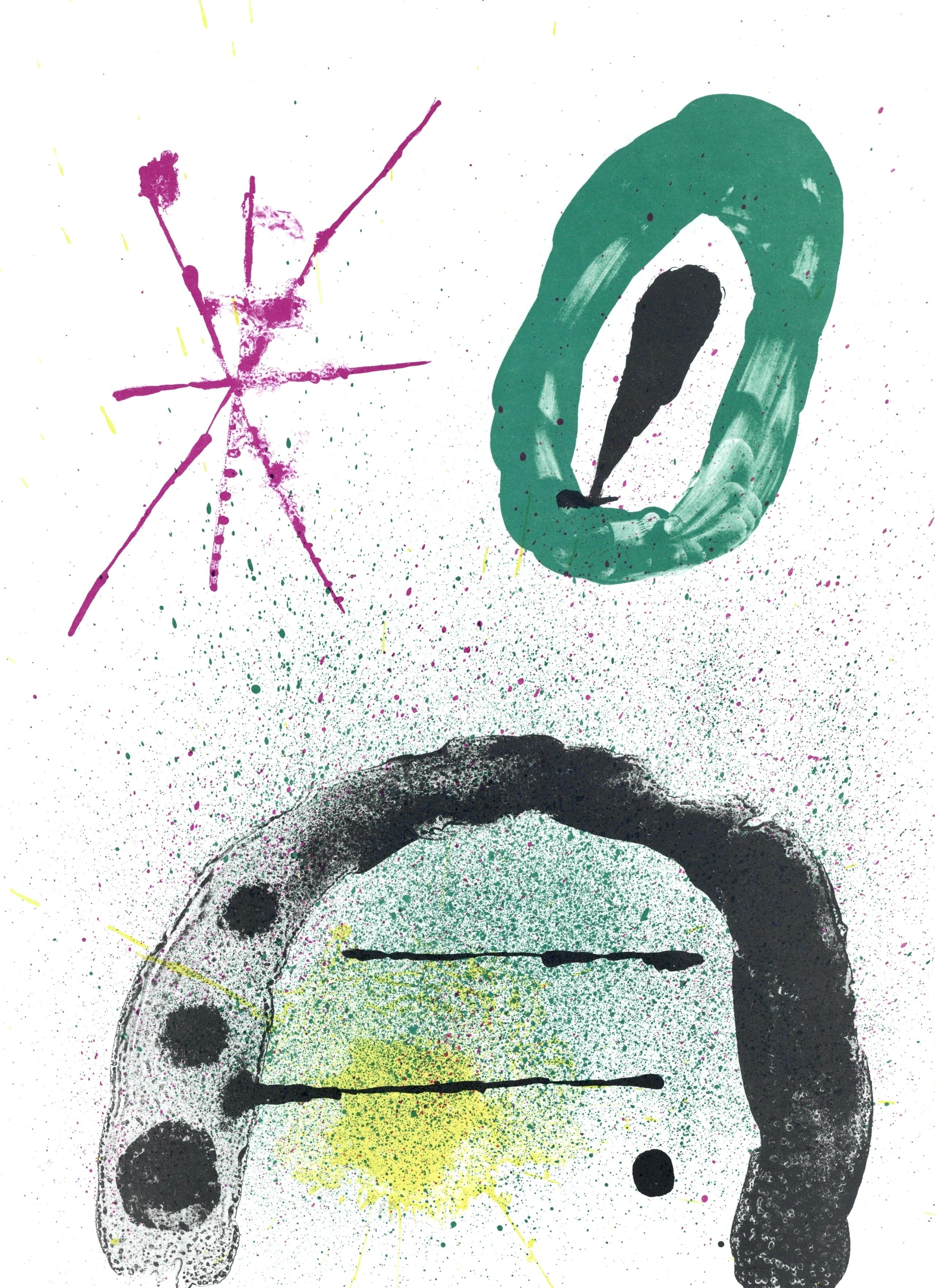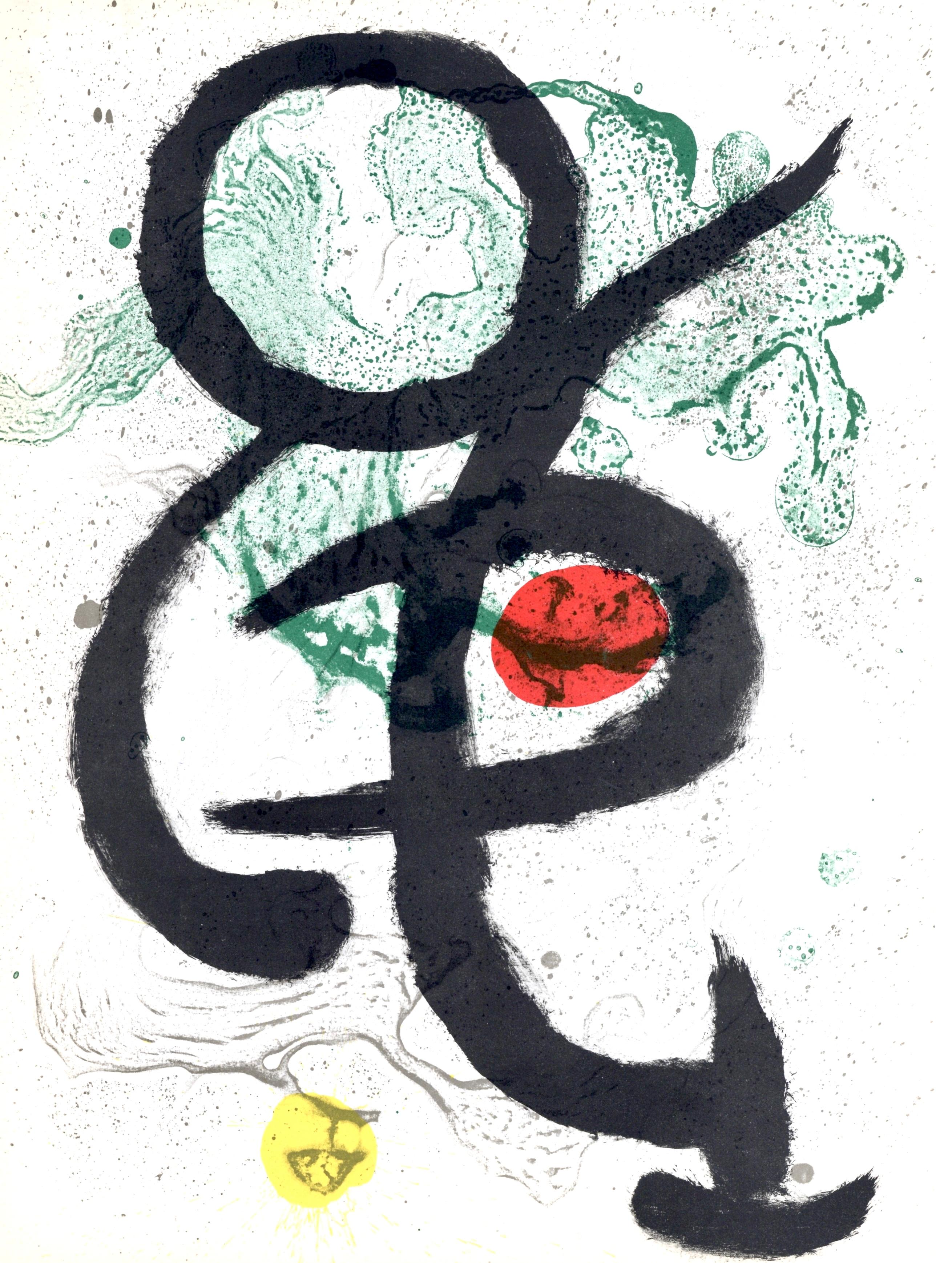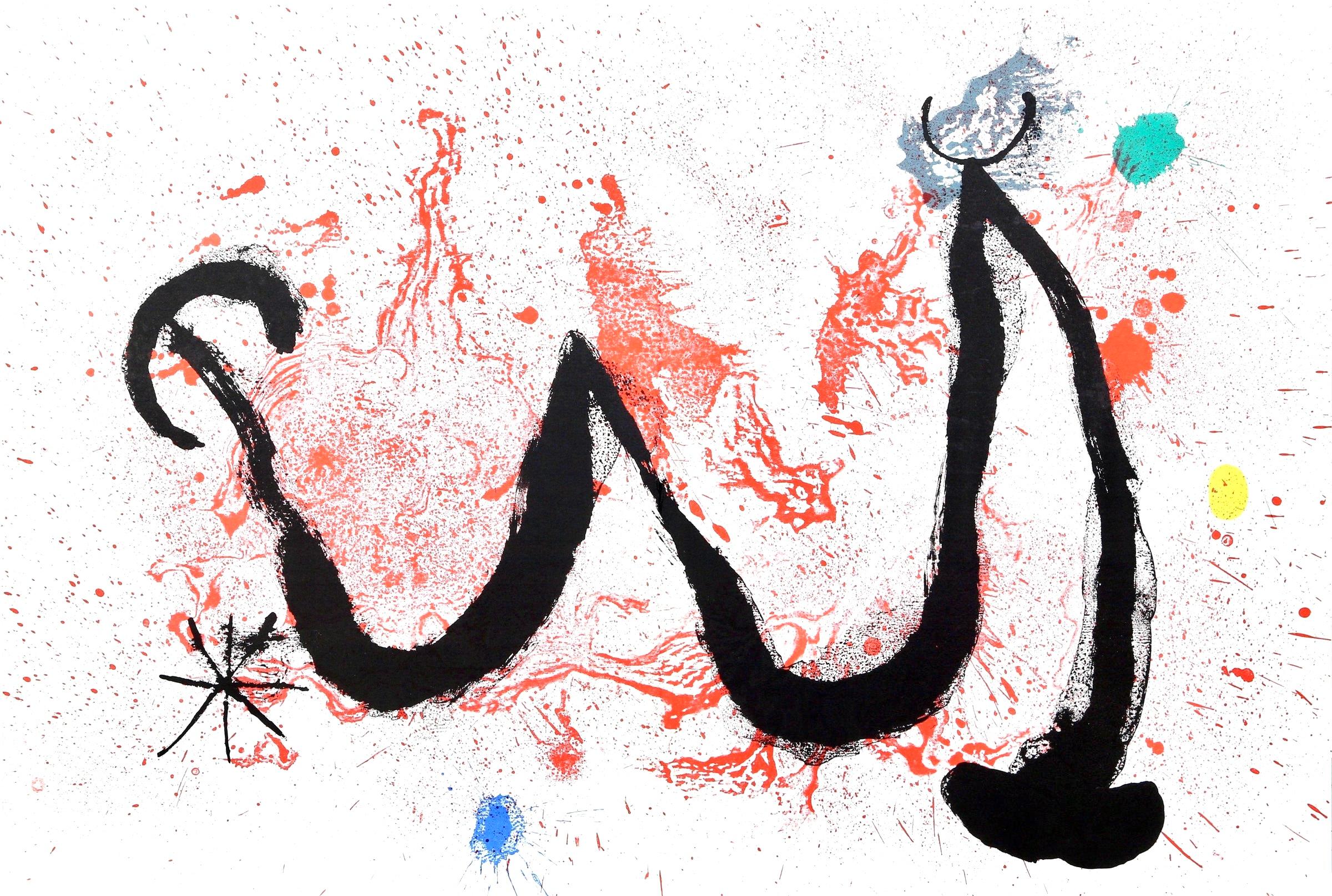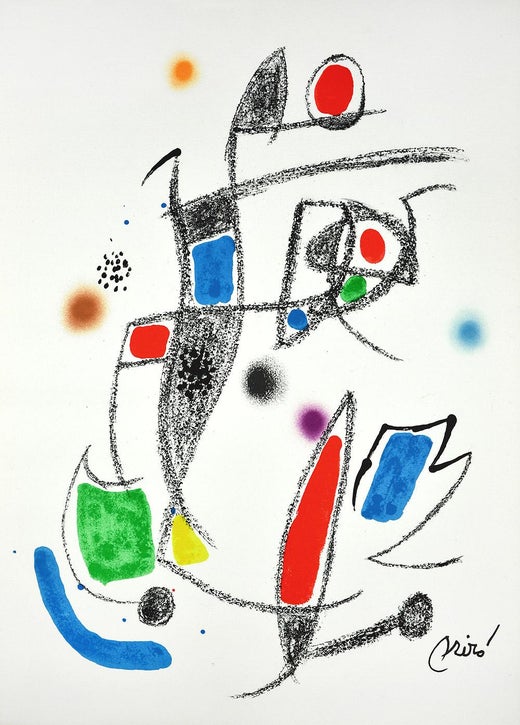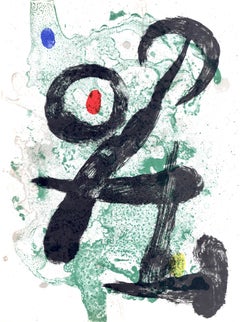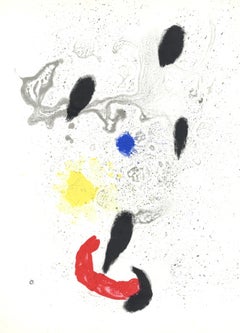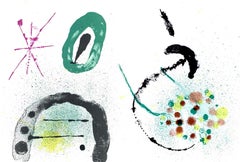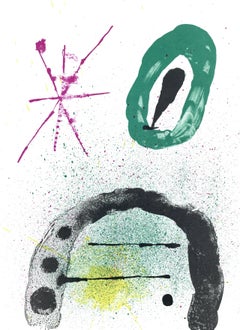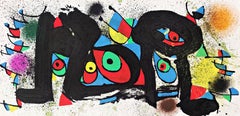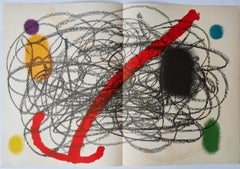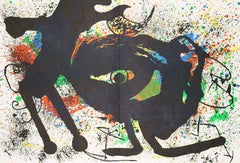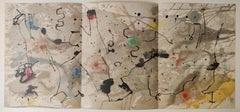This exquisite lithograph by Joan Miro (1893–1983), titled Le prophete et L'oiseau et la femme (The Prophet and The Bird and The Woman), originates from the historic 1966 double issue Derriere le Miroir, Nos. 139–140. Published by Maeght Editeur, Paris, under the direction of Aime Maeght, and printed by Mourlot Freres, Paris, this work exemplifies Miro’s poetic visual language of floating symbols, organic forms, and radiant spatial harmony. In Le prophete et L'oiseau et la femme (The Prophet and The Bird and The Woman), Miro channels dream, myth, and movement into a sweeping composition that pulses with color, intuition, and cosmic rhythm.
Executed on velin paper, this lithograph measures 15 x 22 inches (38.1 x 55.9 cm), with centerfold as issued. As issued, it is unsigned and unnumbered, consistent with the authorized publication format. The edition conveys Miro’s extraordinary synthesis of gesture, imagination, and visual poetry, affirming the expressive power of his mid-century graphic work.
Artwork Details:
Artist: Joan Miro (1893–1983)
Title: Le prophete et L'oiseau et la femme (The Prophet and The Bird and The Woman), from Derriere le Miroir, Nos. 139–140, 1966
Medium: Lithograph on velin paper
Dimensions: 15 x 22 inches (38.1 x 55.9 cm), with centerfold as issued
Inscription: Unsigned and unnumbered, as issued
Date: 1966
Publisher: Maeght Editeur, Paris
Printer: Mourlot Freres, Paris
Catalogue raisonne reference: Cramer, Patrick, and Isabelle Monod-Fontaine. Joan Miro: Catalogue Raisonne des Livres Illustres. Patrick Cramer Editeur, Geneva, 1989, no. 83; Mourlot, Fernand, and Joan Miro. Miro Lithographe III: 1962–1969. Andre Sauret, Paris, 1969, nos. 340–347.
Condition: Well preserved, consistent with age and medium
Provenance: From the 1966 folio Derriere le Miroir, Nos. 139–140, published by Maeght Editeur, Paris
Notes:
Excerpted from the folio (translated from French), The illustrations in this issue are original lithographs by Joan Miro drawn in the workshops of Maeght imprimeur. This issue of "Behind the Mirror" has a luxury edition drawn on velin de Rives and limited to CL examples, numbered or signed by the artist.
About the Publication:
Derriere le Miroir (translated as “Behind the Mirror”) was an iconic French art periodical published from 1946 to 1982 by Maeght Editeur, one of the most influential art publishers of the 20th century. Founded by Aime Maeght in Paris, the publication was conceived as a visual and literary collaboration between leading modern artists, poets, and critics. Each issue functioned as both an exhibition catalogue and a work of art in itself—featuring original lithographs or woodcuts printed directly from the artists’ stones, plates, or blocks, alongside essays, poems, and critical commentary. Over the course of 36 years, Derriere le Miroir produced more than 250 issues and showcased an extraordinary roster of artists including Henri Matisse, Marc Chagall, Joan Miro, Georges Braque, Alexander Calder, Fernand Leger, Pierre Bonnard, Alberto Giacometti, and Eduardo Chillida. Printed in the ateliers of Mourlot and Arte, the periodical set new standards for quality in fine art printing, combining mastery of technique with elegant typography and poetic text. Beyond its visual brilliance, Derriere le Miroir also became a cultural chronicle of postwar European modernism. Each issue coincided with exhibitions held at Galerie Maeght, providing a collectible and widely accessible record of groundbreaking shows. Its integration of image, text, and philosophy created a dialogue between art and literature that elevated the modern art book to new aesthetic heights. Today, Derriere le Miroir remains one of the most sought-after and historically significant art publications, prized by collectors and scholars for its craftsmanship, influence, and its role in defining the visual language of 20th-century modernism. The Maeght Foundation in Saint-Paul-de-Vence continues to honor this legacy through exhibitions and archival preservation, reaffirming Derriere le Miroir’s enduring place in the history of modern art and fine art publishing.
About the Artist:
Joan Miro (1893–1983) was a Catalan painter, sculptor, printmaker, and ceramicist whose visionary imagination and lyrical abstraction made him one of the most influential and beloved artists of the 20th century. Born in Barcelona, Miro drew inspiration from Catalan folk art, Romanesque frescoes, and the luminous landscapes of Mont-roig del Camp, developing a deep connection to nature that infused his work with vitality and symbolism. After formal training at the Escola d'Art in Barcelona, he absorbed the lessons of Post-Impressionism and Cubism before moving to Paris in the early 1920s, where he became a leading figure in the Surrealist movement. There, Miro forged a personal visual language of biomorphic shapes, floating symbols, and radiant color harmonies that reflected both spontaneity and spiritual depth. In creative dialogue with peers such as Alexander Calder, Alberto Giacometti, Salvador Dali, Wassily Kandinsky, Marcel Duchamp, and Man Ray, he helped revolutionize modern art by dissolving the boundaries between abstraction and dream imagery. Miro's inventive approach extended far beyond painting, embracing sculpture, ceramics, and monumental public commissions that redefined how art could interact with space and emotion. His expressive freedom and gestural abstraction profoundly influenced later artists including Jackson Pollock, Mark Rothko, Alexander Calder, Jean Dubuffet, Antoni Tapies, and Joan Mitchell, inspiring generations who sought to merge instinct, color, and imagination. Today, Miro's work remains a cornerstone of modernism, prized by collectors and celebrated in major museums worldwide. His highest auction record was achieved by Peinture (Etoile Bleue) (1927), which sold for approximately 37 million USD at Sotheby's London on June 19, 2012.
Joan Miro lithograph, Miro Derriere le Miroir 139–140, Miro Maeght Editeur, Miro Mourlot Freres, Miro 1966 edition.

